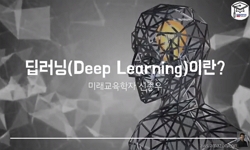A narrative review was conducted of machine learning applications and research in the field of stroke rehabilitation. The machine learning models commonly used in medical research include random forest, logistic regression, and deep neural networks. C...
http://chineseinput.net/에서 pinyin(병음)방식으로 중국어를 변환할 수 있습니다.
변환된 중국어를 복사하여 사용하시면 됩니다.
- 中文 을 입력하시려면 zhongwen을 입력하시고 space를누르시면됩니다.
- 北京 을 입력하시려면 beijing을 입력하시고 space를 누르시면 됩니다.
https://www.riss.kr/link?id=A108380094
-
저자
Choo Yoo Jin (Department of Physical Medicine and Rehabilitation, College of Medicine, Yeungnam University, Daegu, Korea.) ; 장민철 (영남대학교)

- 발행기관
- 학술지명
- 권호사항
-
발행연도
2022
-
작성언어
English
- 주제어
-
등재정보
KCI등재
-
자료형태
학술저널
-
수록면
1-12(12쪽)
- DOI식별코드
- 제공처
-
0
상세조회 -
0
다운로드
부가정보
다국어 초록 (Multilingual Abstract)
A narrative review was conducted of machine learning applications and research in the field of stroke rehabilitation. The machine learning models commonly used in medical research include random forest, logistic regression, and deep neural networks. Convolutional neural networks (CNNs), a type of deep neural network, are typically used for image analysis.
Machine learning has been used in stroke rehabilitation to predict recover y of motor function using a large amount of clinical data as input. Recent studies on predicting motor function have trained CNN models using magnetic resonance images as input data together with clinical data to increase the accuracy of motor function prediction models. Additionally, a model interpreting videofluoroscopic swallowing studies was developed and investigated. In the future, we anticipate that machine learning will be actively used to treat stroke patients, such as predicting the occurrence of depression and the recover y of language, cognitive, and sensor y function, as well as prescribing appropriate rehabilitation treatments
1 Giulia A, "extending association rule mining to microbiome pattern analysis : tools and guidelines to support real applications" 1 : 794547-, 2022
2 Chen T, "Xgboost: a scalable tree boosting system" Association for Computing Machinery 785-794, 2016
3 Sperandei S, "Understanding logistic regression analysis" 24 : 12-18, 2014
4 Roshanzamir A, "Transformer-based deep neural network language models for Alzheimer’s disease risk assessment from targeted speech" 21 : 92-, 2021
5 Mendez KM, "Toward collaborative open data science in metabolomics using Jupyter Notebooks and cloud computing" 15 : 125-, 2019
6 Feng MC, "The mortality and the risk of aspiration pneumonia related with dysphagia in stroke patients" 28 : 1381-1387, 2019
7 Wagner M, "The importance of machine learning in autonomous actions for surgical decision making" 2 : 64-79, 2022
8 Chicco D, "The advantages of the Matthews correlation coefficient(MCC)over F1 score and accuracy in binary classification evaluation" 21 : 6-, 2020
9 Chicco D, "The Matthews correlation coefficient(MCC)is more reliable than balanced accuracy, bookmaker informedness, and markedness in two-class confusion matrix evaluation" 14 : 13-, 2021
10 Exarchos I, "Supervised and unsupervised machine learning for automated scoring of sleep-wake and cataplexy in a mouse model of narcolepsy" 43 : zsz272-, 2020
1 Giulia A, "extending association rule mining to microbiome pattern analysis : tools and guidelines to support real applications" 1 : 794547-, 2022
2 Chen T, "Xgboost: a scalable tree boosting system" Association for Computing Machinery 785-794, 2016
3 Sperandei S, "Understanding logistic regression analysis" 24 : 12-18, 2014
4 Roshanzamir A, "Transformer-based deep neural network language models for Alzheimer’s disease risk assessment from targeted speech" 21 : 92-, 2021
5 Mendez KM, "Toward collaborative open data science in metabolomics using Jupyter Notebooks and cloud computing" 15 : 125-, 2019
6 Feng MC, "The mortality and the risk of aspiration pneumonia related with dysphagia in stroke patients" 28 : 1381-1387, 2019
7 Wagner M, "The importance of machine learning in autonomous actions for surgical decision making" 2 : 64-79, 2022
8 Chicco D, "The advantages of the Matthews correlation coefficient(MCC)over F1 score and accuracy in binary classification evaluation" 21 : 6-, 2020
9 Chicco D, "The Matthews correlation coefficient(MCC)is more reliable than balanced accuracy, bookmaker informedness, and markedness in two-class confusion matrix evaluation" 14 : 13-, 2021
10 Exarchos I, "Supervised and unsupervised machine learning for automated scoring of sleep-wake and cataplexy in a mouse model of narcolepsy" 43 : zsz272-, 2020
11 Winters-Hilt S, "SVM clustering" 8 (8): S18-, 2007
12 Chen X, "Random forests for genomic data analysis" 99 : 323-329, 2012
13 Mazumdar D, "Random forest similarity maps: a scalable visual representation for global and local interpretation" 10 : 2862-, 2021
14 Pirneskoski J, "Random forest machine learning method outperforms prehospital National Early Warning Score for predicting one-day mortality : a retrospective study" 4 : 100046-, 2020
15 Svetnik V, "Random forest : a classification and regression tool for compound classification and QSAR modeling" 43 : 1947-1958, 2003
16 Gupta VP, "Prognosticating functional outcome after intracerebral hemorrhage : the ICHOP score" 101 : 577-583, 2017
17 Shin H, "Prediction of motor outcome of stroke patients using a deep learning algorithm with brain MRI as input data" 2022
18 Kim JK, "Prediction of ambulatory outcome in patients with corona radiata infarction using deep learning" 11 : 7989-, 2021
19 Meng Y, "Prediction model of hemorrhage transformation in patient with acute ischemic stroke based on multiparametric MRI radiomics and machine learning" 12 : 858-, 2022
20 Liang X, "Predicting post-stroke somatosensory function from resting-state functional connectivity : a feasibility study" 11 : 1388-, 2021
21 Lin WY, "Predicting post-stroke activities of daily living through a machine learning-based approach on initiating rehabilitation" 111 : 159-164, 2018
22 Kim JK, "Practical machine learning model to predict the recovery of motor function in patients with stroke" 85 : 273-279, 2022
23 Kriegeskorte N, "Neural network models and deep learning" 29 : R231-R236, 2019
24 Sulubacak U, "Multimodal machine translation through visuals and speech" 34 : 97-147, 2020
25 Heo J, "Machine learning-based model for prediction of outcomes in acute stroke" 50 : 1263-1265, 2019
26 Janiesch C, "Machine learning and deep learning" 31 : 685-695, 2021
27 Choo YJ, "Machine learning analysis to predict the need for ankle foot orthosis in patients with stroke" 11 : 8499-, 2021
28 Ke G, "Lightgbm : a highly efficient gradient boosting decision tree" 30 : 3146-3154, 2017
29 Choi RY, "Introduction to machine learning, neural networks, and deep learning" 9 : 14-, 2020
30 이하경 ; 송종우, "Introduction to convolutional neural network using Keras; an understanding from a statistician" 한국통계학회 26 (26): 591-610, 2019
31 Chang AC, "Intelligence-based medicine" Academic Press 67-140, 2020
32 Saeed SU, "Image quality assessment for machine learning tasks using meta-reinforcement learning" 78 : 102427-, 2022
33 Awad M, "Efficient learning machines" Apress 2015
34 Shin H, "Development of convolutional neural network model for diagnosing meniscus tear using magnetic resonance image" 23 : 510-, 2022
35 Kim JK, "Deep learning algorithm trained on brain magnetic resonance images and clinical data to predict motor outcomes of patients with corona radiata infarct" 15 : 795553-, 2022
36 Sarker IH, "Deep learning : a comprehensive overview on techniques, taxonomy, applications and research directions" 2 : 420-, 2021
37 Sarker IH, "Deep learning : a comprehensive overview on techniques, taxonomy, applications and research directions" 2 : 420-, 2021
38 LeCun Y, "Deep learning" 521 : 436-444, 2015
39 Kim Jeoung Kun ; Choo Yoo Jin ; Choi Gyu Sang ; Shin Hyunkwang ; Chang Min Cheol ; Park Donghwi, "Deep Learning Analysis to Automatically Detect the Presence of Penetration or Aspiration in Videofluoroscopic Swallowing Study" 대한의학회 37 (37): 1-8, 2022
40 Weis DC, "Data mining PubChem using a support vector machine with the Signature molecular descriptor : classification of factor XIa inhibitors" 27 : 466-475, 2008
41 Rajula HS, "Comparison of conventional statistical methods with machine learning in medicine: diagnosis, drug development, and treatment" 56 : 455-, 2020
42 Mutke MA, "Comparing poor and favorable outcome prediction with machine learning after mechanical thrombectomy in acute ischemic stroke" 13 : 737667-, 2022
43 Pan W, "Cluster analysis : unsupervised learning via supervised learning with a non-convex penalty" 14 : 1865-, 2013
44 Nadkarni P, "Clinical research computing" Academic Press 85-114, 2016
45 González RG, "Clinical MRI of acute ischemic stroke" 36 : 259-271, 2012
46 Denisko D, "Classification and interaction in random forests" 115 : 1690-1692, 2018
47 Hancock JT, "CatBoost for big data : an interdisciplinary review" 7 : 94-, 2020
48 Vaswani A, "Attention is all you need" 30 : 1-11, 2017
49 Keilwagen J, "Area under precision-recall curves for weighted and unweighted data" 9 : e92209-, 2014
50 Huang S, "Applications of support vector machine(SVM)learning in cancer genomics" 15 : 41-51, 2018
51 Jovel J, "An introduction to machine learning approaches for biomedical research" 8 : 771607-, 2021
52 Odegua R, "An empirical study of ensemble techniques (bagging, boosting and stacking)" University of Lagos 1-10, 2019
53 Gates ED, "An efficient magnetic resonance image data quality screening dashboard" 23 : e13557-, 2022
동일학술지(권/호) 다른 논문
-
- 대한뇌신경재활학회
- Hwang Wonjae
- 2022
- KCI등재
-
- 대한뇌신경재활학회
- 황유미
- 2022
- KCI등재
-
Classification and Diagnosis of Adult Glioma: A Scoping Review
- 대한뇌신경재활학회
- Byun Yoon Hwan
- 2022
- KCI등재
-
Brain Tumor Rehabilitation: Symptoms, Complications, and Treatment Strategy
- 대한뇌신경재활학회
- 박진영
- 2022
- KCI등재
분석정보
연관 공개강의(KOCW)
-

[제18회 김옥길기념강좌] 인공지능, 감정, 휴머니즘(Human-Compatible Artificial Intelligence’)’
이화여자대학교 스튜어드 러셀 -

Resources: Deep Learning with Mini Whiteboards
Teachers TV Teachers TV -

딥러닝(Deep Learning)이란
신한대학교 신종우 -

비전공자를 위한 AI 딥러닝(Deep Learning)
K-MOOC 한국과학기술원 오종훈 -

Rehabilitation of Child Soldiers in Sierra Leone
Teachers TV Teachers TV





 KCI
KCI


